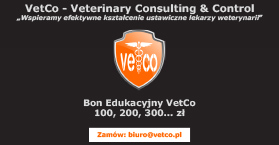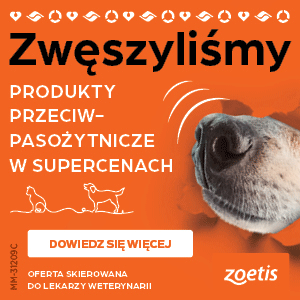Indications for Feeding a Low Fat Diet
There are a number of medical conditions in which a dog may benefit from feeding a low-fat diet (1). The most common disorders that I treat as an endocrinologist, of course, include hyperlipidemia and obesity. However, dogs with pancreatitis, lymphangiectasia, and chronic gastrointestinal disease may also benefit from a low fat diet.
Most dogs with hyperlipidemia have a underlying endocrine disorder, such as diabetes mellitus, hypothyroidism, or Cushing's syndrome, that is responsible for their hyperlipidemia.
However, primary hyperlipidemia or hypertriglyceridemia is also relatively common, especially in Miniature Schnauzers where hyperlipidemia appears to have a genetic basis (1-4). In these patients, administration of fish oils or lipid-lowering agents are sometimes used, but dietary therapy with a low-fat diet remains the primary means of controlling the hyperlipidemia.
What is the Best Commercial Diet to Feed a Dogs with Primary or Secondary Hyperlipidemia?
All of the major pet food companies have low-fat diet on the market. I preferred the Royal Canin Gastrointestinal Low Fat LF™diets (5,6) when I have dogs that needs to be fed a low-fat diet. These formulas are low in dietary fat and are indicated for adult dogs with pancreatitis or hyperlipidemia. Additionally, the formulas are highly digestible, enriched with prebiotics, and contain a precise blend of antioxidants.
Both the dry and canned formulations are extremely low in dietary fat (15.5-15.6% fat calories in either dry or canned formulation) (see Table, below).
 |
| Composition of Royal Canin Veterinary Diet canine Gastrointestinal Low Fat LF™ Diets (5,6) |
There are a number of other "low-fat" prescription diets on the market, but the Royal Canin LF diets are by far the lowest in fat content. For example, Hill's Prescription w/d diets, commonly used by veterinarians to manage hyperlipidemia, contain ~23% fat calories in the dry formulation (7) to over 30% fat calories in the canned formulation (8), both markedly higher than the Royal Canin LF diets (~15.5% fat calories).
In addition to being more effective in controlling hyperlipidemia, most owners find Royal Canin to be more palatable than the Hill's w/d. However, if palatability is an issue with any of these diets, lean protein treats can be added to the prescription diets. These include chunk light canned tuna, low-fat cottage cheese, skinless chicken breast, pork loin, egg white or tilapia.
References
- Xenoulis PG, Steiner JM. Lipid metabolism and hyperlipidemia in dogs. Veterinary Journal 2010;183:12-21.
- Mori N, Lee P, Muranaka S, Sagara F, et al. Predisposition for primary hyperlipidemia in Miniature Schnauzers and Shetland sheepdogs as compared to other canine breeds. Research Veterinary Science 2010;88:394-399.
- Xenoulis PG, Levinski MD, Suchodolski JS, et al. Serum triglyceride concentrations in Miniature Schnauzers with and without a history of probable pancreatitis. Journal of Veterinary Internal Medicine 2011;25:20-5
- Xenoulis PG, Suchodolski JS, Ruaux CG, et al. Association between serum triglyceride and canine pancreatic lipase immunoreactivity concentrations in miniature schnauzers. Journal of the American Animal Hospital Association Am Anim Hosp Assoc 2010; 46:229-234.
- Royal Canin Veterinary Diet Gastrointestinal Low Fat LF. Royal Canin Website.
- Royal Canin Veterinary Diet Gastrointestinal Low Fat LF. Product Information.
- Hill's Prescription Diet w/d Canine Low Fat-Diabetic-Gastrointestinal dry
- Hill's Prescription Diet w/d Canine Low Fat-Diabetic-Gastrointestinal canned
- Schenck P. Diet in endocrine disease. In: Home-Prepared Dog & Cat Diets. 2010;215-228.
Źródło: endocrinevet.blogspot.com













